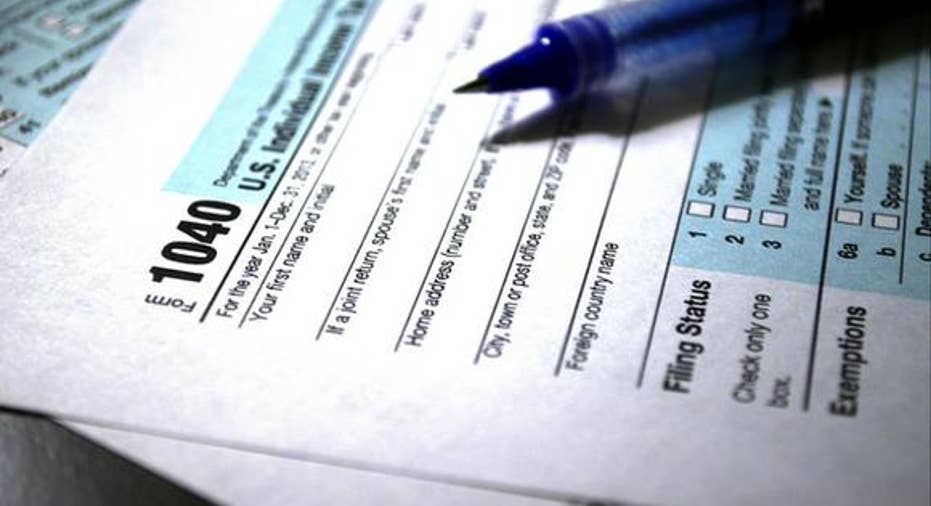The Average American Pays This Tax Rate. How Do You Compare?

With tax season coming to a close, most Americans are probably breathing a sigh of relief at having completed the annual chore. Many, though, are stuck with the feeling that the system is unfair, as the tax code is riddled with esoteric loopholes and deductions that allow some Americans to pay a lower rate than others.
If you're wondering how much an average American family pays in federal taxes -- which include income tax, payroll tax, and excise taxes on goods like gasoline and cigarettes -- the average rate was 21% in 2014.Income tax brackets in the U.S. range from 10% to 39.6%, but due to the Earned Income Tax Credit, some low-income Americans actually pay less than zero in federal income taxes. However, lower-income Americans also pay more as a percentage of their incomes in payroll taxes (for Social Security) than higher-income Americans, because employees only pay the 7.65% FICA tax on incomes of up to $118,000. Notably, Americans in each tax bracket up to $200,000 pay more in payroll taxes than they do in federal income taxes. Due to deductions and credits, the average effective federal income tax rate is less than 10% for all brackets below $200,000.
The $100,000-$200,000 segment has both the biggest share of returns at 15.2% and contributes the most income, making up 27.5% of total contributions. The chart below shows the average tax rate for each income bracket.
| Income Category | Income Tax Rate | Payroll Tax Rate | Total, (Including Excise Taxes) |
| Less than $10,000 | -7.1% | 10.2% | 10.6% |
|
$10,000-$20,000 |
-11% | 8.7% | 0.4% |
| $20,000-$30,000 | -5.4% | 7.3% | 4.1% |
| $30,000-$40,000 | -1.9% | 7.9% | 8.5% |
| $40,000-$50,000 | 0.7% | 8.4% | 11.7% |
| $50,000-$75,000 | 3.8% | 8.6% | 15.2% |
| $75,000-$100,000 | 6% | 8.7% | 17.7% |
| $100,000-$200,000 | 8.8% | 9.5% | 21.6% |
| $200,000-$500,000 | 15.2% | 7.9% | 26.8% |
| $500,000-$1,000,000 | 22.6% | 4.5% | 31.5% |
| More than $1,000,000 | 27.4% | 1.8% | 33.1% |
| Total | 10.1% | 7.5% | 21% |
Source: Staff of the Joint Committee on Taxation
How to lower your tax rateIf you're paying taxes at a higher rate than the average for your income bracket, you may want to think about strategies for lowering your tax bill. One easy way to do that is by contributing to tax-advantaged retirement account such as a 401(k) or a Traditional IRA. Not only will those contributions help lower your tax bills today, they make saving for your golden years easier. Contributions to a Roth IRA, on the other hand, don't give you tax deductions now, but your investments and gains can be withdrawn tax-free after you retire.
One of the most popular tax deductions in the country is the mortgage interest deduction. It was claimed by 24% of filers in 2012, at an estimated total value of $405 billion, or about $1,200 for every individual American.If you're currently renting your home and your rent is similar to a monthly mortgage payment for an equivalent place, you may want to consider purchasing a home, depending on other factors such as whether you can afford a down payment, how much time you plan to stay in that area, and your job situation. In 2012, the average mortgage interest deduction was nearly $10,000, meaning switching from renting to owning could save you several thousand dollars on your tax bill.
Depending on your individual situation, there are several types of deductions and credits you will want to look into. Students should be sure to take advantage of the $2,000 education tax credit, while self-employed Americans or small business owners should claims deductions such as for a home office or for use of a vehicle. If there's a cause or nonprofit organization you'd like to support, making a charitable donation is also an easy way to cut your tax bill.
Taking a long-term perspective, you may want to invest now for later in life as investment income is generally taxed at a lower rate than earned income and is not subject to payroll taxes. Building up portfolio of dividend stocks may not lower your tax rate next year, but over the long haul an income stream of qualified dividends, which are taxed at a rate of just 15%, could make your tax bill a little lighter.
The article The Average American Pays This Tax Rate. How Do You Compare? originally appeared on Fool.com.
Try any of our Foolish newsletter services free for 30 days. We Fools may not all hold the same opinions, but we all believe that considering a diverse range of insights makes us better investors. The Motley Fool has a disclosure policy.
Copyright 1995 - 2016 The Motley Fool, LLC. All rights reserved. The Motley Fool has a disclosure policy.